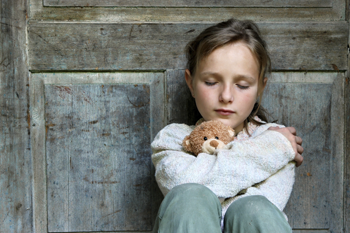What is child sexual abuse?
Child sexual abuse is a significant public health problem and an adverse childhood experience (ACE). Child sexual abuse refers to the involvement of a child (person less than 18 years old) in sexual activity that violates the laws or social taboos of society and that he/she:
- does not fully comprehend
- does not consent to or is unable to give informed consent to, or
- is not developmentally prepared for and cannot give consent to
How big is the problem?
Many children wait to report or never report child sexual abuse. Therefore, the numbers below likely underestimate the true impact of the problem. Although estimates vary across studies, the research shows:
- About 1 in 4 girls and 1 in 20 boys in the United States experience child sexual abuse.
- Someone known and trusted by the child or child’s family members, perpetrates 91% of child sexual abuse.
- The total lifetime economic burden of child sexual abuse in the United States in 2015 was estimated to be at least $9.3 billion.
What are the consequences?
Experiencing child sexual abuse can affect how a person thinks, acts, and feels over a lifetime. This can result in short- and long-term physical, mental, and behavioral health consequences.
Examples of physical health consequences include:
- sexually transmitted infections (STIs)
- physical injuries
- chronic conditions later in life, such as heart disease, obesity, and cancer
Examples of mental health consequences include:
- depression
- posttraumatic stress disorder (PTSD) symptoms
Examples of behavioral consequences include:
- substance use/misuse, including opioid misuse
- risky sexual behaviors, meaning sex with multiple partners or behaviors that could result in pregnancy or STIs
- increased risk for perpetration of sexual violence
- increased risk for suicide or suicide attempts
Experiencing child sexual abuse can also increase a person’s risk for future victimization. For example, recent studies have found:
- Females exposed to child sexual abuse are at 2-13 times increased risk of sexual violence victimization in adulthood
- People who experienced child sexual abuse are at twice the risk for non-sexual intimate partner violence
What are the current gaps in child sexual abuse prevention?
Adults are responsible for ensuring that children have safe, stable, nurturing relationships and environments. Resources for child sexual abuse have mostly focused on treatment for victims and criminal justice-oriented approaches for perpetrators. These efforts are important after child sexual abuse has occurred. However, little investment has been made in primary prevention or preventing child sexual abuse. Effective evidence-based strategies are available to proactively protecting children from child sexual abuse, but few have been widely disseminated. More resources are needed to develop, evaluate, and implement evidence-based child sexual abuse primary prevention strategies. These strategies can help ensure that all children have safe, stable, nurturing relationships and environments.
What are the recommendations for future research?
Child sexual abuse is preventable. CDC surveillance systems, violence prevention initiatives, and efforts to support partners in the field have increased our understanding of child sexual abuse. However, there are still critical gaps.
Additional efforts in child sexual abuse prevention are needed to:
- Improve surveillance systems and data collection for monitoring child sexual abuse
- Increase our understanding of risk and protective factors for child sexual abuse perpetration and victimization
- Strengthen existing and develop new evidence-based policies, programs, and practices for the primary prevention of child sexual abuse
- Increase dissemination and implementation of evidence-based strategies for child sexual abuse prevention
CDC has developed resources to help states and communities use the best available evidence to prevent child abuse and neglect, sexual violence, and ACEs. Learn more about how you can get started implementing the Resources for Action, formerly known as, “technical packages,” in your violence prevention work.
Additionally, in September 2020, CDC awarded a total of $766,367 to two awardees. This funding opportunity is to support the rigorous evaluation of an approach (program, policy, or practice) for the primary prevention of adult-perpetrated CSA. Read more about our CSA-funded research.
Source: https://www.cdc.gov/violenceprevention/childsexualabuse/fastfact.html



